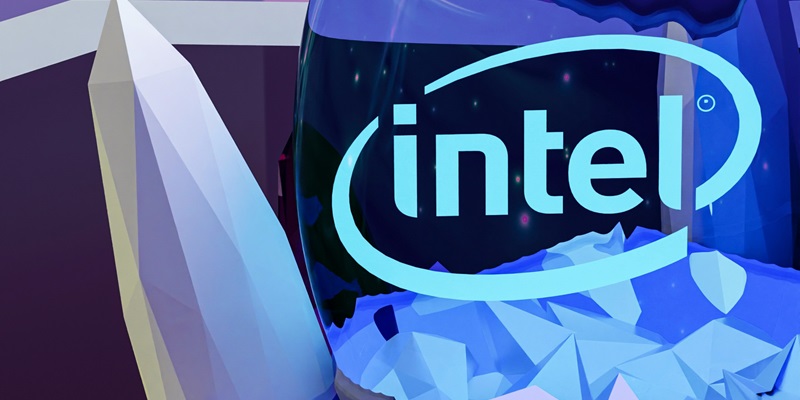The technology world is abuzz with rumors surrounding Intel’s forthcoming Core Ultra 9 285K processor, a critical addition to the Arrow Lake-S series. Designed to catapult Intel into the high-end desktop CPU arena, this processor stands poised to challenge AMD’s flagship models and potentially revolutionize the market. Among the standout features eagerly speculated are the processor’s clock speeds, core configurations, and a notable performance boost. This article delves into these anticipated specifications and explores how Intel’s new offering might impact the competitive landscape.
Speculated High-Performance Specifications
Impressive Clock Speeds
The buzz around the Core Ultra 9 285K centers on its clock speeds, which promise to deliver substantial improvements over previous models. The P-Core max boost is rumored to hit an astounding 5.7 GHz, while the E-Core max boost could reach 4.7 GHz. Additionally, potential all-core boosts of 5.4 GHz for P-Cores and 4.6 GHz for E-Cores are being discussed. This kind of power is designed not only to meet but to exceed the demands of high-end computing environments, from gaming to advanced computational tasks.
Such specifications are especially noteworthy when compared to its predecessor, the Core i9-14900K. The 285K’s P-Core max boost is 300 MHz slower, yet its E-Core max boost excels by 300 MHz. This indicates Intel’s strategic shift to balance performance core speed with efficiency core enhancements, aiming for a well-rounded, robust computational capacity. The overall power consumption, marked by a 125W TDP, suggests a powerful yet manageable processor in terms of thermal performance, making it a potentially viable option for both professional and consumer markets.
Core Configurations and Performance Boost
The Core Ultra 9 285K is anticipated to integrate 8 Performance cores and 16 Efficiency cores. This combination aims to provide a versatile performance profile, catering to a wide array of applications. The processor’s architecture, featuring Lion Cove Performance Cores and Skymont Efficient Cores, underscores Intel’s emphasis on marrying high-end processing power with optimized thermal and power efficiency. Such a configuration promises to deliver a total of 24 threads, facilitating smoother multitasking and elevated performance metrics in real-world scenarios.
The integration of Arc Xe-LPG graphics further enhances the processor’s capabilities, making it a formidable choice for graphics-intensive tasks. This addition could bring significant benefits to gamers and professional creatives alike, offering an all-in-one solution for enhanced graphical performance without the need for a discrete GPU. The varied core configurations and expected performance boost solidify the Core Ultra 9 285K as a multi-faceted powerhouse, ready to rival AMD’s top-tier offerings in every conceivable way.
Market Impact and Industry Rivalry
Challenging AMD’s Flagships
Intel’s strategic positioning of the Core Ultra 9 285K aims directly at AMD’s Zen 4-based Ryzen 9 7950X and the newer Ryzen 9 9900X. These AMD processors have set high benchmarks in the CPU market, and Intel’s new offerings will have to exceed these to assert dominance. The purported specifications of the 285K suggest that Intel has done precisely that—addressing previous criticisms, finessing their architecture, and boosting clock speeds to deliver a product that not only competes but possibly outperforms AMD’s flagship models.
Should these specifications hold true, the high-end desktop CPU market may witness a reinvigorated rivalry between Intel and AMD, each pushing the envelope in terms of performance and innovation. This competition bodes well for consumers, who can expect a range of advanced, powerful processors that cater to demanding workloads like never before. Additionally, it will prompt both companies to prioritize continual improvements and innovations, driving the industry forward.
Intel’s Broader Strategy
The tech industry is buzzing with excitement over Intel’s upcoming Core Ultra 9 285K processor, a significant addition to the Arrow Lake-S series. This processor is designed to propel Intel into the high-end desktop CPU market, aiming to compete directly with AMD’s top-tier models and potentially transform the competitive landscape. The anticipated features that have everyone talking include impressive clock speeds, advanced core configurations, and a remarkable performance boost. This article delves into these eagerly awaited specifications and evaluates how this new Intel offering might reshape the market dynamic.
In addition to its raw power, the Core Ultra 9 285K is expected to bring a host of new technologies and optimizations that could set new standards for performance and efficiency. Industry insiders speculate that the processor will incorporate cutting-edge architecture improvements, energy-efficient designs, and enhanced multi-threading capabilities. As Intel prepares to roll out this significant advancement, enthusiasts and professionals alike are keen to see how it will stack up against AMD’s heavyweights and what it means for the future of desktop computing.

